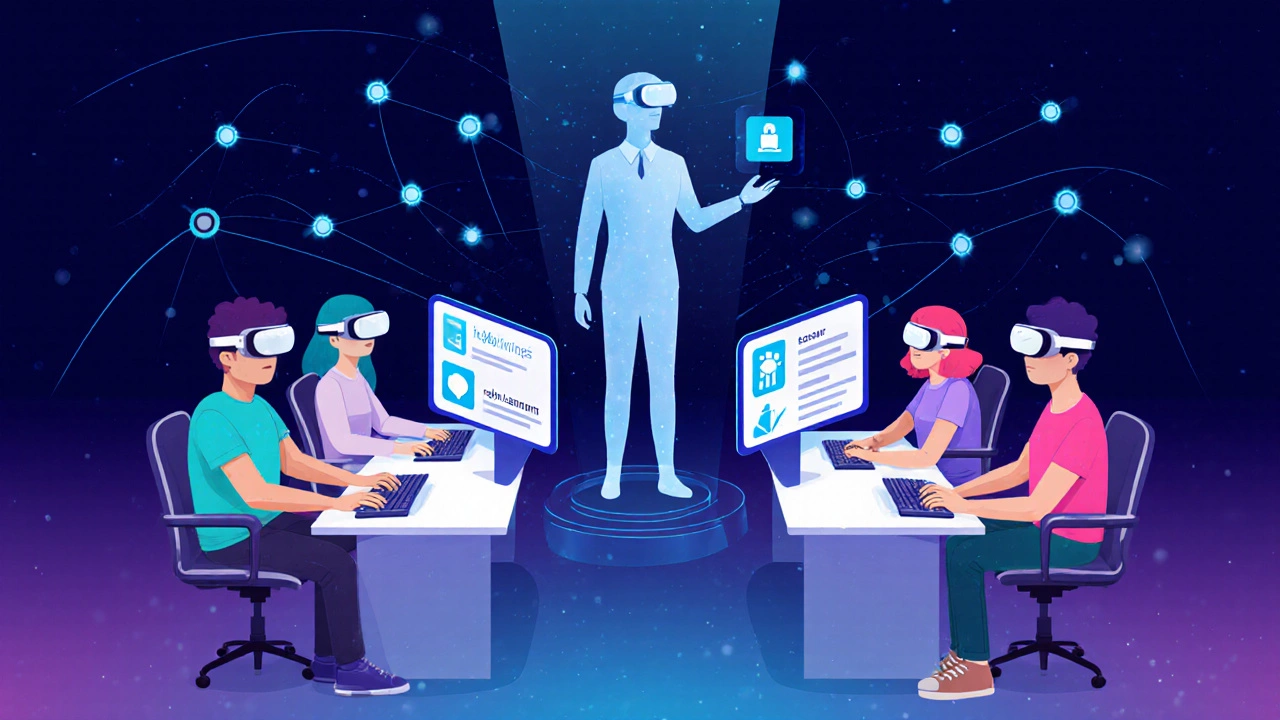Virtual Learning vs eLearning Decision Guide
Choose the right learning approach for your needs
Answer these questions to determine whether virtual learning or eLearning best suits your situation
Your Learning Situation
Recommended Approach
Why this approach?
When to consider the alternative
When you hear the terms "virtual learning" and "eLearning," they often get tossed around as if they mean the same thing. But are they really interchangeable? This article untangles the concepts, shows where they overlap, and points out the critical distinctions so you can decide which approach fits your situation.
Key Takeaways
- eLearning is any learning that happens digitally, usually through a Learning Management System and can be either synchronous or asynchronous.
- Virtual learning specifically recreates a live classroom experience using video, audio, and interactive tools, focusing on real‑time interaction.
- Choosing between them depends on goals: flexibility and self‑pace favor eLearning; immediacy and community favor virtual learning.
- Both rely on technology, but the tech stack differs - virtual learning leans on video conferencing and immersive tools, while eLearning leans on content repositories and assessment engines.
- Hybrid models combine the strengths of each, letting learners enjoy flexibility while still feeling connected.
What is eLearning?
eLearning is a broad term for any learning delivered through electronic devices - computers, tablets or smartphones - over the internet. It can be packaged as video lessons, interactive quizzes, discussion boards, or simulations. The common thread is that the material lives in a digital format that learners can access anytime, anywhere.
Typical attributes of eLearning include:
- Hosted on a Learning Management System (LMS) that tracks progress, scores, and completion.
- Often asynchronous, meaning learners can start, pause, or finish modules on their own schedule.
- Content can be static (PDFs, slides) or interactive (drag‑and‑drop, branching scenarios).
- Assessment tools range from simple multiple‑choice quizzes to complex competency‑based evaluations.
What is Virtual Learning?
Virtual learning mimics the feel of a physical classroom inside a digital space. It uses live video conferencing, real‑time chat, and often immersive technologies like virtual reality (VR) or augmented reality (AR) to create a shared environment where participants interact simultaneously.
Key characteristics:
- Synchronous delivery - learners log in at the same time to attend a live session.
- Emphasis on interaction: breakout rooms, polls, whiteboards, and collaborative documents.
- May incorporate Immersive Technology (VR/AR) for simulations that feel hands‑on.
- Often facilitated by an instructor acting as a virtual “teacher” guiding discussion.
Core Differences Between eLearning and Virtual Learning
| Aspect | eLearning | Virtual Learning |
|---|---|---|
| Delivery Mode | Asynchronous or synchronous, but often self‑paced. | Primarily synchronous, real‑time interaction. |
| Technology Focus | Learning Management System, content libraries, quizzes. | Video conferencing, live chat, VR/AR spaces. |
| Instructor Role | Content creator / facilitator, limited live presence. | Live guide, moderates discussions, provides instant feedback. |
| Typical Use Cases | Corporate compliance training, self‑study courses, MOOCs. | Remote classroom teaching, virtual labs, live workshops. |
| Assessment Style | Automated grading, competency tracking. | Live polls, real‑time quizzes, performance during simulations. |
When to Use eLearning vs. Virtual Learning
Here’s a quick decision guide:
- Need flexibility? Choose eLearning. Learners can fit modules around work, travel, or family commitments.
- Require real‑time feedback? Virtual learning shines when you want instant Q&A, group discussion, or practice labs.
- Budget constraints? Asynchronous eLearning often costs less because you don’t need high‑bandwidth video rooms for every session.
- Complex skill training? Immersive virtual labs (e.g., medical procedure simulations) can’t be replicated with static eLearning alone.
- Large audience? Massive Open Online Courses (MOOCs) are classic eLearning; virtual classrooms work better with groups under 200 for interaction quality.

Common Tools and Platforms
Both approaches share some tech, but each has its own favored tools.
eLearning platforms (often LMSs):
- Canvas - robust for academic institutions.
- Moodle - open‑source, highly customizable.
- TalentLMS - popular for corporate micro‑learning.
Virtual learning tools:
- Zoom or Microsoft Teams - core for live video sessions.
- Gather.town or VirBELA - create virtual campuses with avatars.
- Labster - VR labs for science education.
Many LMSs now embed video‑meeting features, blurring the line between the two. That’s why hybrid designs are gaining traction.
Tips for Choosing the Right Approach
- Identify learning objectives. If mastery requires practice with immediate correction, lean toward virtual learning.
- Assess learner bandwidth. High‑definition video can strain connections; if learners have limited internet, opt for eLearning with downloadable assets.
- Consider scale. For 10,000 learners, a self‑paced eLearning course is more manageable than scheduling thousands of live sessions.
- Factor in time zones. Global audiences benefit from asynchronous eLearning, while regional teams might enjoy weekly virtual meet‑ups.
- Budget for technology. VR headsets or premium video licenses add cost - ensure ROI before committing.
Remember, you don’t have to pick one forever. Many providers blend both: deliver core content as eLearning modules, then schedule periodic virtual workshops for deeper discussion.
Frequently Asked Questions
Is virtual learning a type of eLearning?
Yes. Virtual learning falls under the broader umbrella of eLearning because it uses electronic devices and internet connectivity. The distinction lies in the synchronous, interactive nature of virtual learning compared to the often self‑paced format of standard eLearning.
Can I replace all my classroom sessions with eLearning?
It depends on the subject and learner needs. For theory‑heavy topics, eLearning works well. For skills that need hands‑on practice, live labs, role‑play, or immediate feedback, a virtual or hybrid approach is usually more effective.
What are the main cost differences?
eLearning typically requires a one‑time content production cost plus LMS licensing. Virtual learning adds recurring expenses for video‑conference licenses, bandwidth, and sometimes immersive hardware. Scale can flip the equation - large numbers of live sessions become expensive quickly.
Do learners prefer one over the other?
Surveys in 2023‑2024 showed 62% of adult learners value flexibility above all, favoring eLearning. However, 48% cited a lack of interaction as a drawback, indicating a strong appetite for occasional virtual sessions to boost engagement.
How do I measure success for each method?
For eLearning, track completion rates, quiz scores, and time‑on‑task using LMS analytics. For virtual learning, add metrics like live attendance, participation (chat messages, poll responses), and post‑session satisfaction surveys.



